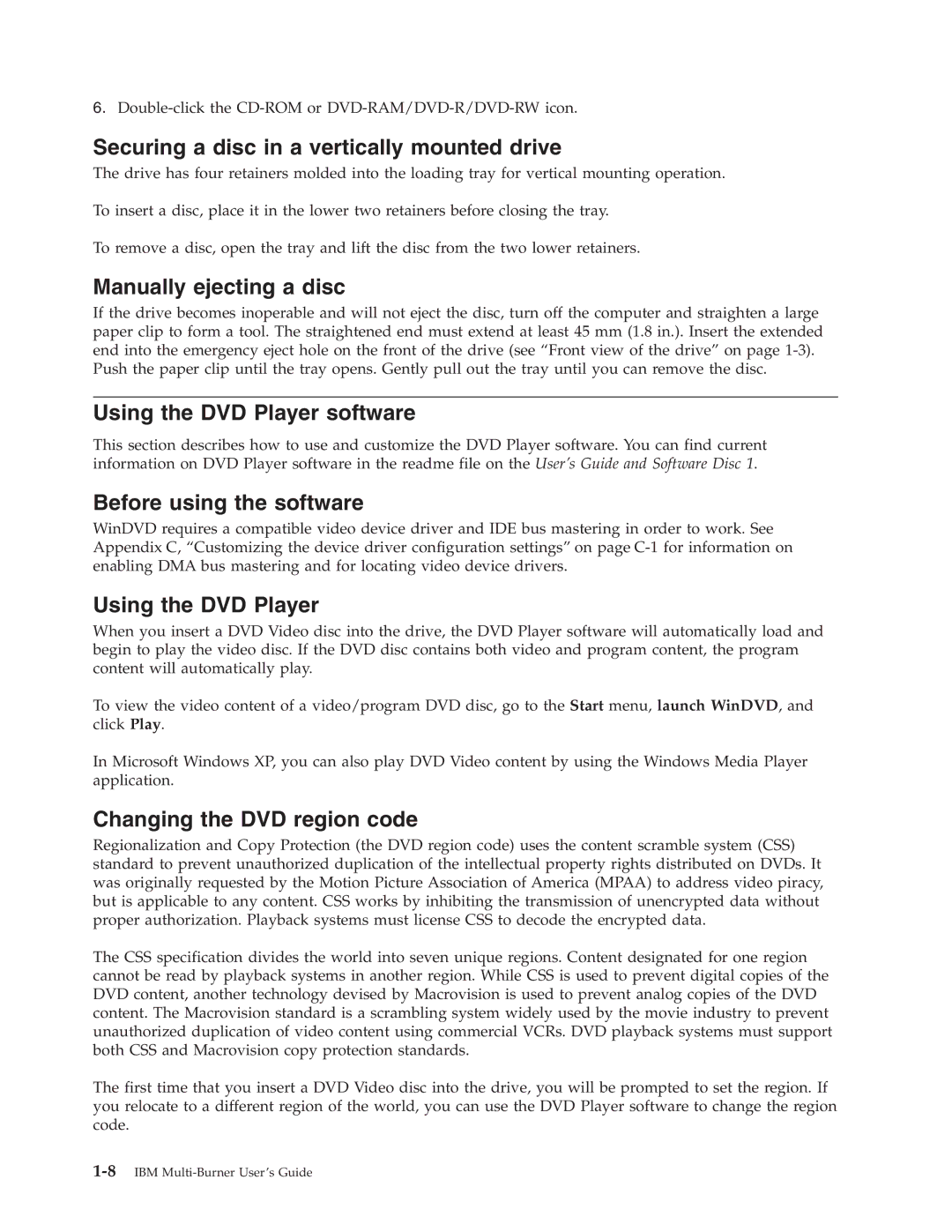6.
Securing a disc in a vertically mounted drive
The drive has four retainers molded into the loading tray for vertical mounting operation.
To insert a disc, place it in the lower two retainers before closing the tray.
To remove a disc, open the tray and lift the disc from the two lower retainers.
Manually ejecting a disc
If the drive becomes inoperable and will not eject the disc, turn off the computer and straighten a large paper clip to form a tool. The straightened end must extend at least 45 mm (1.8 in.). Insert the extended end into the emergency eject hole on the front of the drive (see “Front view of the drive” on page
Push the paper clip until the tray opens. Gently pull out the tray until you can remove the disc.
Using the DVD Player software
This section describes how to use and customize the DVD Player software. You can find current information on DVD Player software in the readme file on the User’s Guide and Software Disc 1.
Before using the software
WinDVD requires a compatible video device driver and IDE bus mastering in order to work. See Appendix C, “Customizing the device driver configuration settings” on page
Using the DVD Player
When you insert a DVD Video disc into the drive, the DVD Player software will automatically load and begin to play the video disc. If the DVD disc contains both video and program content, the program content will automatically play.
To view the video content of a video/program DVD disc, go to the Start menu, launch WinDVD, and click Play.
In Microsoft Windows XP, you can also play DVD Video content by using the Windows Media Player application.
Changing the DVD region code
Regionalization and Copy Protection (the DVD region code) uses the content scramble system (CSS) standard to prevent unauthorized duplication of the intellectual property rights distributed on DVDs. It was originally requested by the Motion Picture Association of America (MPAA) to address video piracy, but is applicable to any content. CSS works by inhibiting the transmission of unencrypted data without proper authorization. Playback systems must license CSS to decode the encrypted data.
The CSS specification divides the world into seven unique regions. Content designated for one region cannot be read by playback systems in another region. While CSS is used to prevent digital copies of the DVD content, another technology devised by Macrovision is used to prevent analog copies of the DVD content. The Macrovision standard is a scrambling system widely used by the movie industry to prevent unauthorized duplication of video content using commercial VCRs. DVD playback systems must support both CSS and Macrovision copy protection standards.
The first time that you insert a DVD Video disc into the drive, you will be prompted to set the region. If you relocate to a different region of the world, you can use the DVD Player software to change the region code.
